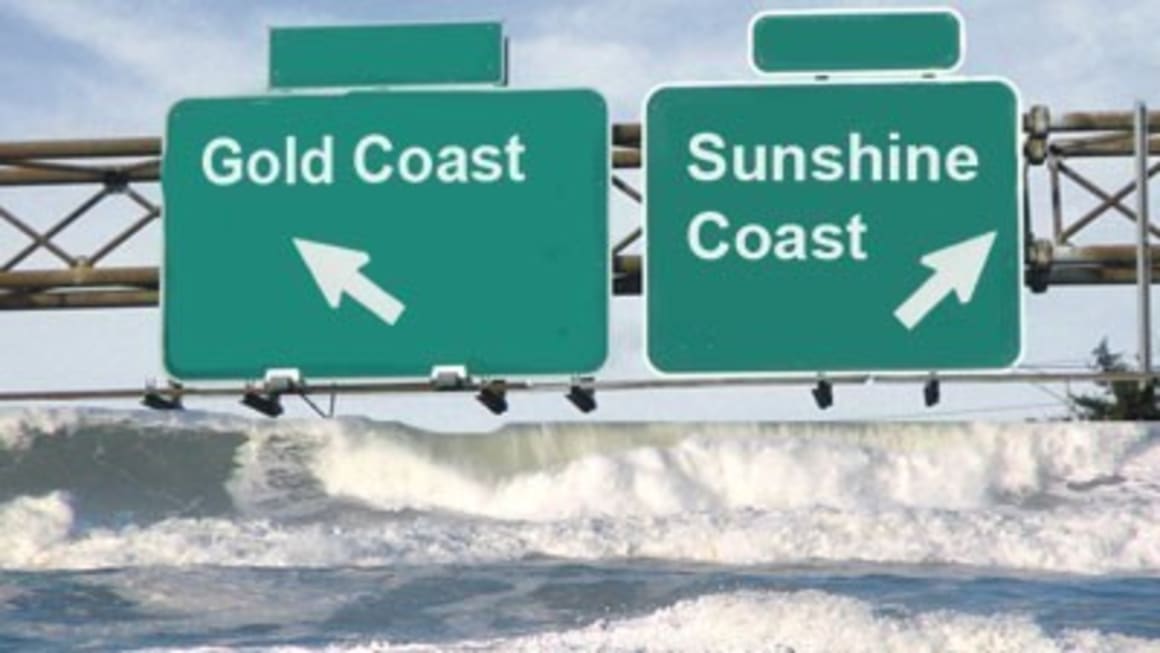Gold Coast and Sunshine Coast show no signs of turnaround as more homes worth less than purchase price: RP Data

An increasing percentage of recent Gold and Sunshine Coast home buyers would get less than what they paid for homes if they were to sell them now, according to the latest RP Data Value Accumulation report.
The quarterly report compares the original purchase prices with the current estimated value of property as at June 2012 to provide a measure of value accumulation.
Around 18.3% of Gold Coast properties are now worth the same or less than their original purchase price, compared with 16.8% in the March quarter.
On the Sunshine Coast the proportion of properties worth the same or less than their original purchase price increased from 14.3% to 16.7% from the March quarter to the June quarter.
Nationally, the percentage of homes worth less than or the same as their purchase price increased from 5.4% of homes in the March quarter to 5.9% in the June quarter 2012.
“Of course many homes purchased over the past year would be worth less, with values having fallen by 3.6% across the combined capitals over the 12 months to June 2012,” noted RP Data.
The Gold Coast and Sunshine Coast maintained their second and third place rankings respectively on the list of locations with greatest proportion of homes worth the same or less than their purchase price, but both have worsened on this metric since the March quarter report.
Properties currently listed for sale on the Gold Coast below their previous purchase price include this three-bedroom townhouse (pictured below) on Central Street in Labrador, being marketed by Peter Jarmer of Smart Real Estate and seeking offers above $279,000. The property last sold for $295,000 in January 2008.

Another property listed for close to its previous sale price is this four-bedroom house on Hobwee Street, Veresdale, in the Gold Coast hinterland near Beaudesert, which is seeking offers above $299,000. It last sold for $295,000 in May 2008. The property is being marketed by Andrew Patrick from Elders Jimboomba.

The top position on the RP Data list of locations with greatest proportion of homes worth the same or less than their purchase price was retained by the far north Queensland market, which includes heavily tourism-dependent Cairns, Palm Cove, Port Douglas, Innisfail, Weipa and Atherton, with just under one in five homes (19.9%) worth less than their purchase price as of June 2012.

Source: RP Data
However, while a greater proportion Gold Coast and Sunshine Coast properties slipped into the red, the far north Queensland valuation position remained unchanged since the March quarter.
RP Data notes in the report that "coastal and lifestyle markets, which had previously been supported by a strong tourism sector and the ‘sea-change’ phenomenon, have tended to be the weakest performers”.
“Nine of the 10 regions with the greatest proportion of value declines adjoin the coast, with these regions accounting for 9.6% of the national population. Noticeably, none of the capital city housing markets appear on this list,” RP Data says.
RP Data says the housing market in north Queensland has been “noticeably weak and has felt the full brunt of the economic downturn”.
“Prior to the onset of the financial crisis, this region was benefitting from surging demand due to a high level of population growth, with property values subsequently rising strongly.
“As a result, the majority of home owners that have purchased since 2008 are likely to have a current value that is lower than the purchase price.”
Another market that weakened noticeably was West Moreton, which recorded the greatest quarterly increase of 4.2 percentage points, with 11.8% of homes now worth less or equal to their original purchase price.
West Moreton occupies the entire rural western portion of south-east Queensland and includes the electorates of Lockyer, Beaudesert, Ipswich West and Nanango.
At the other end of the spectrum, Canberra retained its position as having the lowest proportion of homes worth less than their purchase price, with just 2.2% fitting into this category.
Outside of Canberra, no other capital city housing markets feature on the list.
“Most of the regions detailed are characterised as being regional and linked either to the mining and resources sector or agriculture,” says RP Data

Source: RP Data
On a state-by-state basis, Queensland has the greatest percentage of properties that have recorded a decline or no change in value since their purchase at 9.6%, but down from 11% at the end of 2012.
Western Australia also has a relatively high instance of homes worth less than or the same as their purchase price at 6.8%, down from 7.9% of homes last quarter.
On the other hand, the Australian Capital Territory (2.1% down from 2.5%) and Victoria (3.3% down from 4%) have relatively few properties worth less than or the same as their initial purchase price.
According to RP Data, Australia’s residential housing market was worth an estimated $4.83 trillion at the end of June 2012. This is more than three-and-a-half times the value of the Australian equities market, which has a market capitalisation of $1.2 trillion.
“The amount of equity in one’s home is often a key factor that a bank will assess when deciding whether or not to lend money. Australians have increasingly relied on equity, which is simply the value of the home less the amount of debt held against the property, as a vehicle to leverage into other investments,” notes RP Data.
Over the 10 years to June 2012, capital city home values have increased by about 73%.